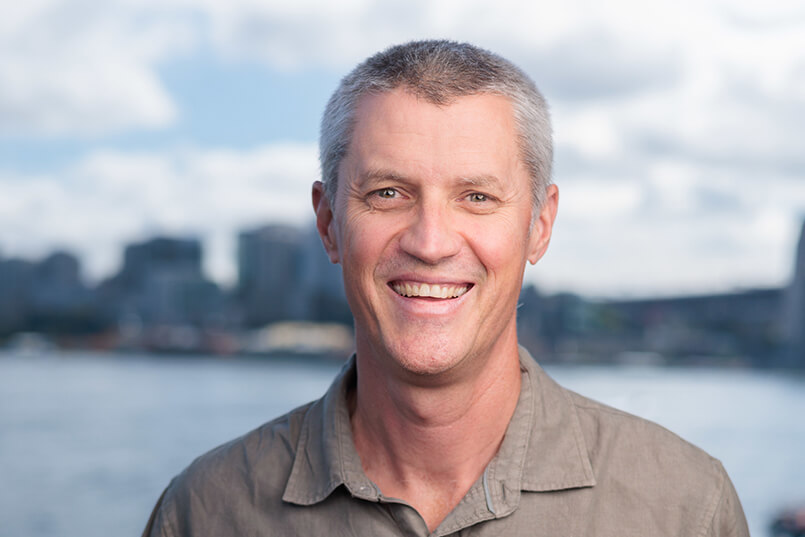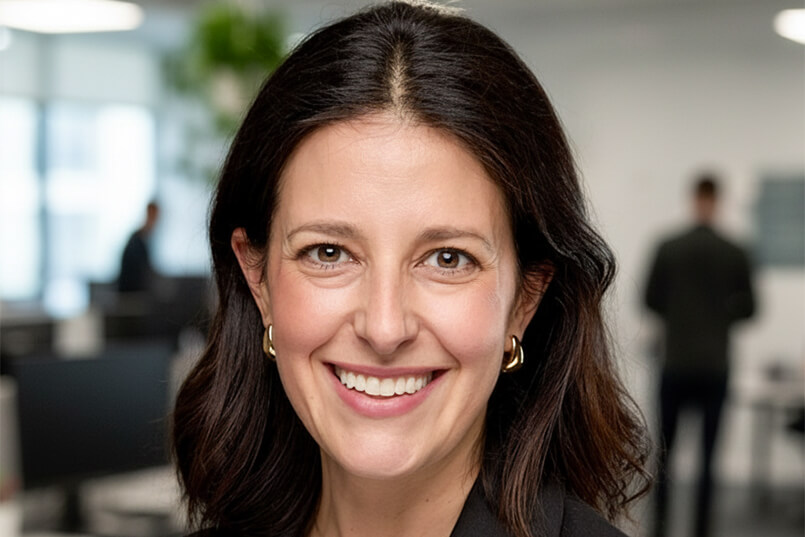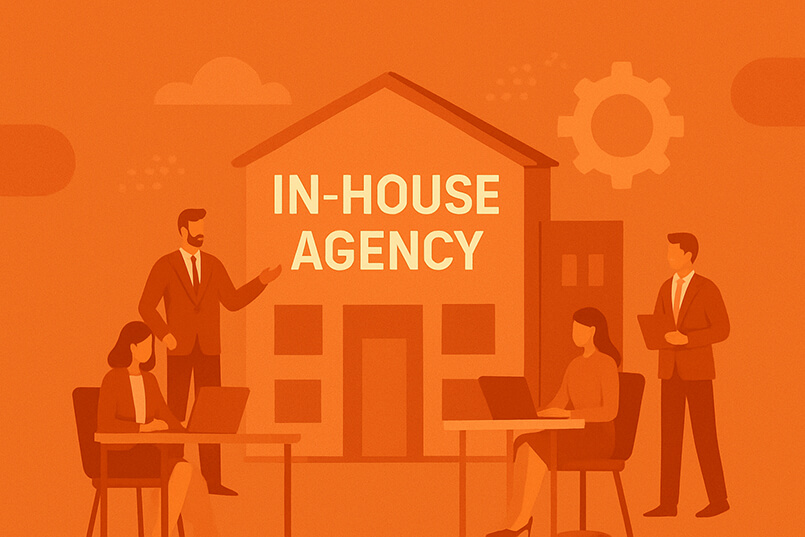Ian Perrin, founder of Speed, discusses his journey in the marketing industry, the importance of differentiating independent agencies, and the impact of mental health initiatives like Keep Talking.
He discusses the evolving landscape of in-housing versus outsourcing, the challenges and opportunities it presents, and the transformative role of AI in the marketing field.
Ian also emphasises the need for agencies to focus on client-centric models and the importance of having open conversations about mental health in the industry.
You can listen to the podcast here:
Follow Managing Marketing on Soundcloud, Podbean, TuneIn, Stitcher, Spotify, Apple Podcast and Amazon Podcasts.
When we get it right, there’s great magic in the intersection of sort of creativity and rational thinking. When we get it wrong, it’s just really boring dashboards and really shity PowerPoints.
Transcription:
Ellie:
My name is Ellie Angell and welcome to Managing Marketing, a podcast where we discuss the issues and opportunities facing marketing, media, and advertising with industry thought leaders.
I’m joined today by Ian Perrin, an industry stalwart and veteran. He’s ex-CEO of Zenith Media and, for the last nine years, has been the founder and managing partner of the successful independent agency, SPEED. Welcome, Ian.
Ian:
Thank you for having me.
Ellie:
SPEED has been around for nearly a decade and has achieved significant respect with very little fanfare. Tell me the story of how SPEED came to be.
Ian:
While the cliche about being tired of the holding company model is partly true, the main reason was being inspired to develop a new and different model. I wanted to replicate the experience I had at an agency called Naked, focused on solutions rather than predetermined outcomes, and one that truly looked after its people. I built on that model by adding a much-needed analytical focus.
The biggest “sliding door” moment for SPEED was when my current business partner, Duncan, joined. The agency became a combination of two very different people: myself, who is more strategic and innovative, and Duncan, who comes from a data analytics and performance background. It’s a yin and the yang combination. We find great magic in the intersection of creativity and rational thinking.
Another key factor was the support of my partner, who essentially told me to “stop complaining about existing media agencies and go and build something better.
Beyond the “Indie vs. Whole Co” False Narrative
Ellie:
Nine years is a long time. Your recent interview stated that SPEED “smashed it by focusing on business results, not awards; solutions not arbitrage; and diving headfirst into AI.” It felt like you were trying to differentiate yourself from the generic concept of “indies.”
Ian:
I think we talk way too much in the industry about the differences between multinationals and indies. The “indie vs. Whole Co” narrative is almost a false narrative because it hides the fact that every agency is very different.
The conversation should be about business models. We see ourselves as a modern, nimble, transparent, and innovative business focused on our clients, versus legacy models that talk about scale and deals. This is not strictly an indie versus Whole Co issue. Agencies need to differentiate themselves through their model and how they go to market. We are certainly a very different agency to the other independent agencies we often get bracketed with; for instance, we are far more focused on analytics. We must continue to be differentiated and authentic, otherwise, we’ll face the same difficulties as the holding companies.
Ellie:
I agree; the David versus Goliath narrative is tired. The agencies who win pitches are often defined by a motivated and talented group of people who understand their proposition, regardless of their ownership.
Ian:
Absolutely. Clients have more options now than ever before. We need to really lean into those options. Agencies need the commercial courage to be true to their center of gravity rather than claiming they can do everything, which leads to a lack of differentiation. It’s amazing that not entering awards has become a differentiating factor for us, solely because it allows us to be 100% focused on our clients. If we’re differentiating on something so small, we must be differentiating in bigger, more strategic areas to ensure clients see a tangible difference.
I worry that it’s tough for many models to keep up with all the elements required now, even just in the media ecosystem. The generalization versus specialism conversation is really interesting, and clients often get confused about exactly what they are looking for.
Mental Health and the “Keep Talking” Initiative
Ellie:
I want to change gears and talk about Keep Talking, a fantastic initiative you started with B&T. It’s a series of articles about mental health, suicide, and other incredibly important topics. What has the industry reaction told you about our attitudes?
Ian:
“Work to do” is probably the best place to start. Keep Talking came about after my father took his own life 18 months ago. As an industry, we’re doing well talking about mental health, but when it comes to more serious issues like suicide, people are still very awkward, and there’s a lot of stigma attached. I was personally trying to find a way to make it easier for people to ask and for me to answer questions. One of the best ways to overcome these issues is by talking about them, which is where Keep Talking came from.
The initiative is organic: we have the editorial series in B&T with high-level business leaders, we’re raising funds for Lifeline (close to $100,000 now), and we’ve done a number of talks.
My overarching impression of the industry is one of incredible pride. So many people—clients, media owners, publishers, and contributors—immediately embraced it. Nobody has said no. It’s reignited my passion for the industry. I think we forget that 99% of the industry are incredibly wonderful people who just want to be helping and doing good.
Ellie:
Having senior voices who are prepared to be vulnerable is so important, as a young person struggling often perceives that the CEO doesn’t have these problems.
Ian:
Industry leaders are fortunate enough to have a pulpit, and they need to lead. By having these conversations, they can help and support so many others. We all need to be better educated and mentored on how to help people in difficult situations. That’s why getting people to go to mental health first aid courses is so important. Most people are quiet because they don’t know what to say or don’t have the tools, not because they don’t care.
Ellie:
What’s next for Keep Talking?
Ian:
We’ll extend the editorial series with B&T and do more talks. The next element is to try and be more creative around how we can raise funds for Lifeline. I’ve been working with Adam Ferrier, and we have a few exciting ideas.
In-Housing, Out-Housing, and the Hybrid Model
Ellie:
Let’s talk about in-housing. Do you see that noise as a challenge, a threat, or possibly an opportunity?
Ian:
I’m 100% supportive of new models like in-housing, particularly when applicable to certain clients. For clients with their own data and tech who need performance media in-house, it makes a lot of sense.
For us, it’s probably been more of an opportunity than a threat. We’ve done consulting work helping people start in-house models. We’re often part of hybrid models, which is becoming the most common practice. This allows agencies to focus on things they are better at—more of the innovation and strategy—and ensures clients can build more cost-efficient execution models.
We also do a lot of out-housing, auditing clients’ in-house capabilities or tweaking elements of their model. One of the negatives of in-housing is a lack of exposure to new thinking, different client tests, or learnings from other businesses. This external perspective is valuable.
Ellie:
The best agencies are the ones that are able to mold themselves around their clients rather than impose themselves, and that logic applies perfectly to a hybrid in/out-house model.
Ian:
You’re looking for the most talented group of people structured in the most effective way. However, in-house models sometimes struggle to bring in as many brilliant people because recruitment is difficult. It’s often unhealthy when an in-house solution is implemented through the lens of the CFO, focused purely on cost control. Cost input doesn’t necessarily mean optimal output. Organisations that refuse to hire the best talent or enough people will fail.
Embracing AI: The Power of Test and Learn
Ellie:
You mentioned AI at the start. What are the most important things you and your clients are focusing on right now, as opposed to constantly crystal balling it?
Ian:
The start of the internet and the AI revolution feel like the two biggest epoch-changing moments of my career. Our approach is getting into the test and learn phase. If we said we had the perfect, fixed AI solution, we’d be bullshitting. We have to keep testing, learn quickly from failures, and make changes.
We are trialing AI across the full gamut of our agency: HR, strategy, research and segmentation, operations, and media buying. Weirdly, we thought it would be most beneficial for operational efficiencies, but we’ve actually found it more useful for segmentation and research, helping us understand consumers faster by loading in significant amounts of data.
We’re a 40-person agency with four people (10%) dedicated to AI, including my business partner, Duncan. He has sprinted toward AI like a man possessed. We’re going to continue sprinting at top speed and see what happens.
Ellie:
Permission to fail is really important in this space.
Ian:
You have to acknowledge you will fail because it’s all new. If you frame it with the client that “we are going to trial things on your account, let’s work together,” they become part of the solution and the excitement.
We also get caught up in chasing shiny new things. We are a little bit guilty as an industry of chasing the shiny new rather than the effective.
The biggest highlight for me, having been a media planner for nearly 30 years, is that we’ve totally revolutionized the traditional Excel flow chart using AI in just a few months. How our clients now see the work we do has changed massively. We’ll get even better at visualizing it over the next few months, and that’s a really exciting time to be part of the industry.
Ellie:
It’s definitely an exciting time to be part of the industry. Thank you, Ian, for all of your wisdom and experience. All the very best with SPEED and with Keep Talking.
Ian:
Thank you so much for having me.




